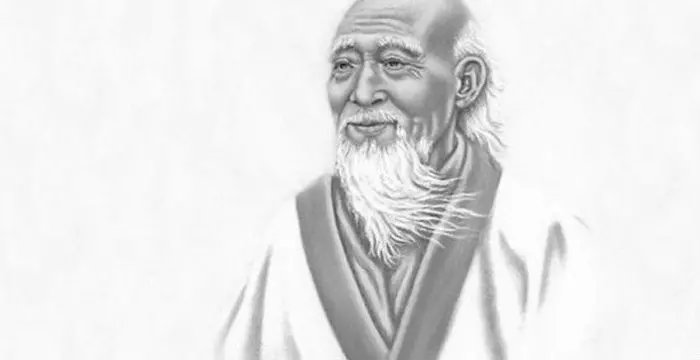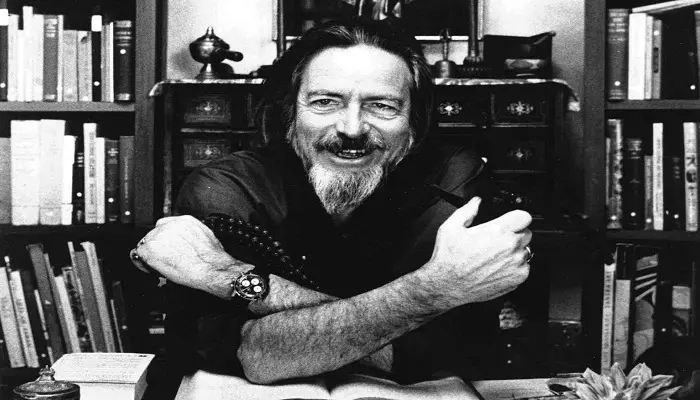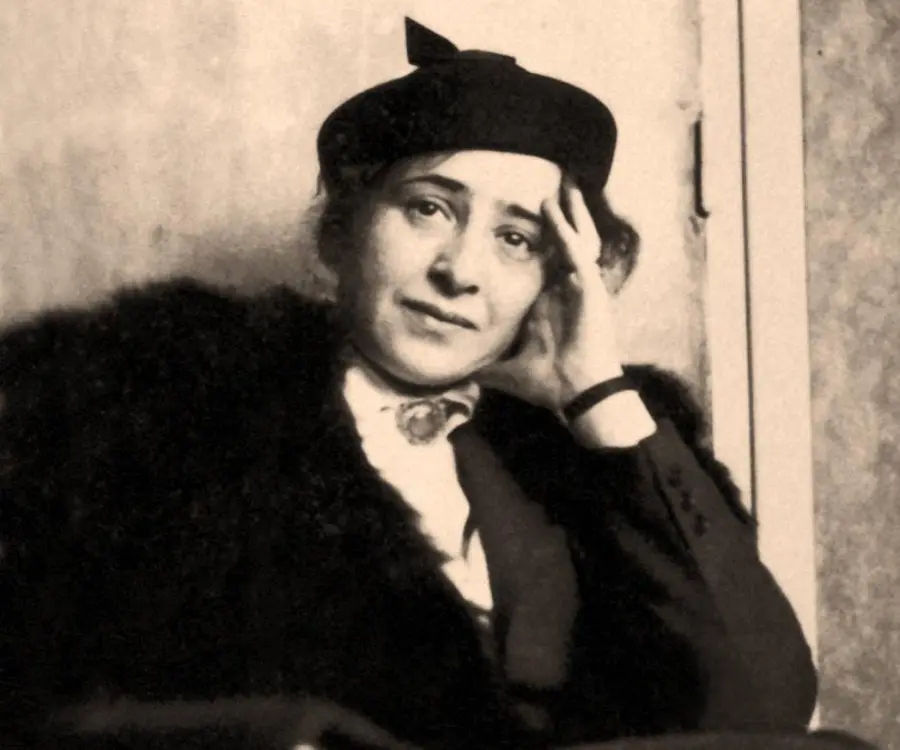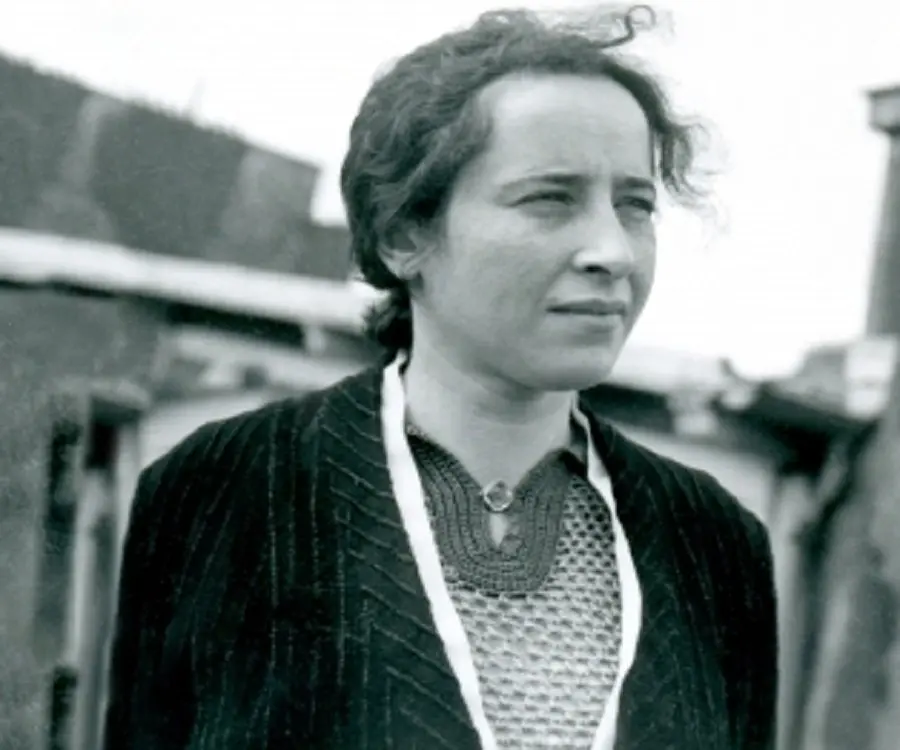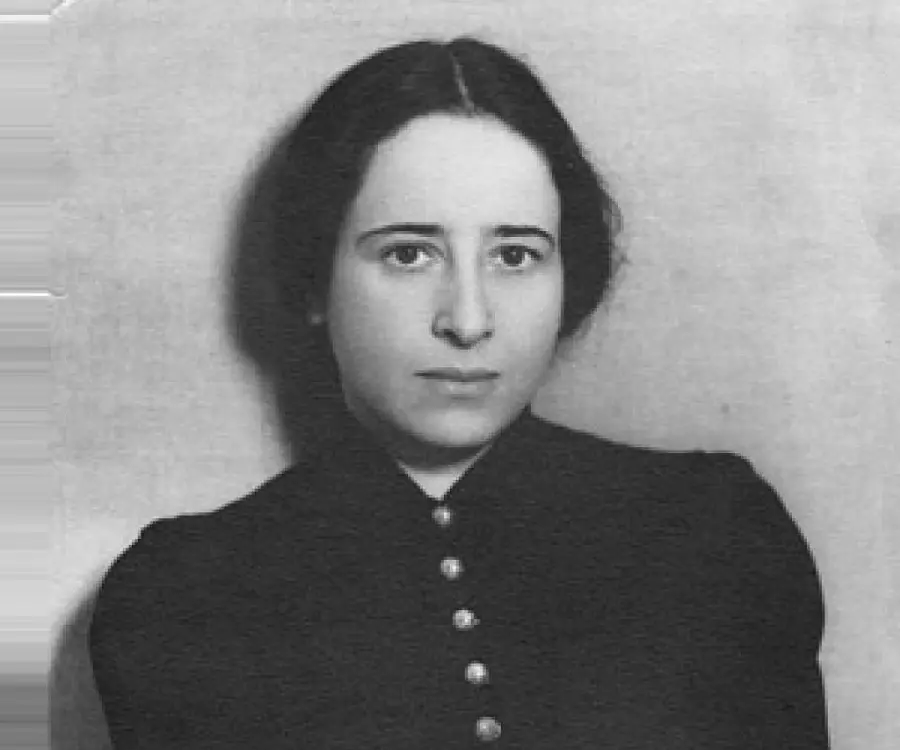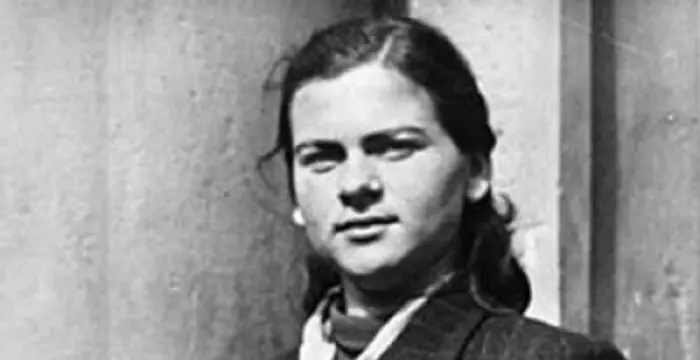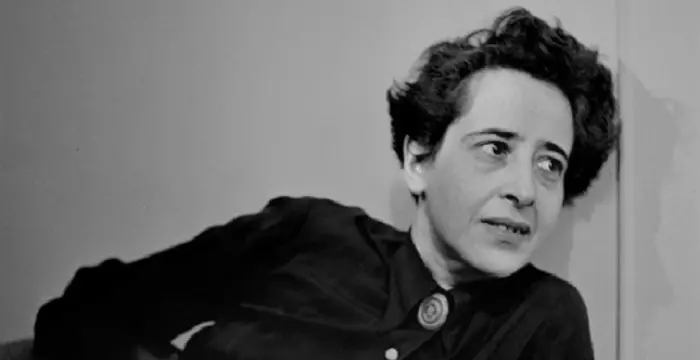
Hannah Arendt - Intellectuals & Academics, Family and Facts
Hannah Arendt's Personal Details
Hannah Arendt was a popular political philosopher and theorist
| Information | Detail |
|---|---|
| Birthday | October 14, 1906 |
| Died on | December 4, 1975 |
| Nationality | German |
| Famous | Intellectuals & Academics, Philosophers |
| Spouses | Günther Anders, Heinrich Blücher |
| Known as | Johanna Hannah Arendt |
| Universities |
|
| Birth Place | Hanover, Germany |
| Religion | Judaism |
| Gender | Female |
| Father | Paul Arendt |
| Mother | Martha (née Cohn) |
| Sun Sign | Libra |
| Born in | Hanover, Germany |
| Famous as | Philosopher |
| Died at Age | 69 |
// Famous Philosophers
Martin Buber
One of the greatest philosophers to have ever walked on earth, Martin Buber contributions to philosophy is a long-standing one. Explore all about his profile, childhood, life and timeline here.
Lao Tzu (Laozi)
Lao Tzu was a legendary Chinese philosopher who wrote the important “Daodejing”. This biography profiles his childhood, life, career, achievements and timeline.
Alan Watts
Alan Watts was a famous British philosopher known for his Zen teachings and interpretations of Eastern philosophy. Read more about this great philosopher in the following article.
Hannah Arendt's photo
Who is Hannah Arendt?
Hannah Arendt was a prominent 20th century American political philosopher and theorists. Writer of some of the most popular political works, such as ‘Origin of Totalitarianism’, ‘The Human Condition’, ‘On Revolution’, ‘The Life of Mind’ and so on, Arendt’s work interestingly cannot be defined to a particular ‘said’ political philosophy. In fact, it wouldn’t be wrong to say that Arendt never wrote anything that represented a systematic political philosophy through which she explained a single argument. Most of her topics were wide and diverse ranging from issues of totalitarianism to revolution, nature of freedom to history of political thought, direct democracy to authority and so on. For most of her work, she drew her inspiration from the works of Heidegger, Aristotle, Augustine, Kant, Nietzsche, Jaspers, and others. Having spent some crucial pre-World War II years in Germany, it was in 1940s that she shifted base to USA. It was in New York that Arendt’s career as a political theorist took off. She soon became part of an influential circle of writers and intellectuals. Not long after World War II, Arendt served as a visiting professor and lecturer of political philosophy in many prestigious universities and institutions across America.
// Famous Intellectuals & Academics
Bertil Gotthard Ohlin
Bertil Gotthard Ohlin was a famous Swedish economist. This biography profiles his childhood, family life & achievements.
Emily Greene Balch
Emily Greene Balch was an American economist, sociologist and pacifist who won the 1946 Nobel Peace Prize. This biography of Emily Greene Balch provides detailed information about her childhood, life, achievements, works & timeline.
Martin Buber
One of the greatest philosophers to have ever walked on earth, Martin Buber contributions to philosophy is a long-standing one. Explore all about his profile, childhood, life and timeline here.
Childhood & Early Life
Hannah Arendt was born on October 14, 1906 in Linden, Germany, to Martha and Paul Arendt, in a secular family of German Jews. Arendt grew up in Königsberg and Berlin.
After graduating from high school in 1924, she enrolled at the University of Marburg. There, she studied philosophy with Martin Heidegger. Heidegger much like her was a German Jewish. They developed a romantic liaison.
After completing a year at Marburg, Hannah Arendt moved to Freiburg University where she spent a semester. In 1926, she moved to the University of Heidelberg. Working under existentialist philosopher-psychologist Karl Jaspers, she finally completed her dissertation, Der Liebesbegriff bei Augustin, and got it published in 1929.
Following her doctorate degree, she continued with her involvement in Jewish and Zionist politics. As a result of her research on antisemitism she was arrested and imprisoned by the Gestapo in 1933.
In 1937, she was ripped off her German citizenship. Fearing Nazi prosecution, she left for Czechoslovakia. She then travelled to Geneva, where she worked for some time at the League of Nations before leaving for Paris. At Paris, she befriended the Marxist literary critic and philosopher Walter Benjamin.
Career
When German military took over parts of northern France, Jews residing in the place were deported to internment camps. Hannah Arendt too was interned in Camp Gurs as an ‘enemy alien’. In 1941, together with her husband Blucher, she fled to USA to escape detention.
During the early years of 1940s in New York, Arendt worked actively for the German-Jewish community. She worked as a columnist for the German language newspaper Aufbau. She also directed research for the Commission on European Jewish Cultural Reconstruction. Her work involved travelling to Europe.
In 1944, Hannah Arendt began working for her first major political book, ‘The Origins of Totalitarianism’. Highlighting that the roots of Stalinism and Nazism lay in antisemitism and imperialism, Arendt in her book defined that totalitarianism was a new form of government that employed terror to suppress mass population. She argued that totalitarianism did not just mean eradicating the Jews but subjugating a line of thought through dictatorship and tyranny.
During World War II, she began working for Youth Aliyah. It was a Zionist organization that safeguarded thousands of homeless children from Holocaust and settled them in the British Mandate of Palestine. During this time, Arendt befriended Karl Jaspers and American author Mary McCarthy.
In 1946, she began working on her next work ‘What is Existenz Philosophy’. It was published the same year. Around this time, she also took up the chair of an editor at Schoken Books in New York.
In 1950, Hannah Arendt became a naturalized citizen of the United States. In 1951, her book, ‘The Origins of Totalitarianism’ was published. Immediately after its publication, the book became a classic and was much admired by the critics. During this time, she rekindled her friendship with Heidegger.
During the early 1950s, Hannah Arendt began serving as a visiting scholar and took up professional positions at various American universities. She had visiting fellowship at the University of Notre Dame, University of California, Berkeley, Princeton University, and Northwestern University.
In 1958, her most important philosophical work, ‘The Human Condition’ was published. In it, she differentiates political and social concepts, labor and work, and various forms of actions and later defines its implication. It was in this work that Arendt’s theory of political action was extensively developed. Same year, her work, biography of Rahel Varnhagen was published.
In 1959, Hannah Arendt became the first female lecturer at Princeton University. From 1963 to 1967, she taught at the University of Chicago. There, she was also a member of the Committee of Social Thought.
From 1967, she took up university professorship at the New School in Manhattan, a position which she served until her death. Meanwhile, she served as a fellow at the Yale University and was a member of the Center for Advanced Studies at Wesleyan University.
In 1961, Arendt attended the trial of Adolf Eichmann in Jerusalem as a reporter of New York magazine. Two years later, she came up with her work ‘Eichmann in Jerusalem’. The work caused major controversy in Jewish circles. Same time, she also came up with her work ‘On Revolution’ that gave an insight on American and French Revolutions.
During the decade of 1960s, Arendt came up with a number of essays, including ‘Between Past and Future’, ‘Men in Dark Times’ and ‘Crises of the Republic’.
At the time of her death, Hannah Arendt was working on her last major philosophical work, ‘The Life of the Mind’. While she had completed the first two volumes: ‘Thinking’ and ‘Willing’, she was working on the last volume ‘Judging’ before she breathed her last. While the first two volumes were published posthumously in 1978, the background and notes of her unfinished work for the third volume was published in 1982 as ‘Lectures on Kant's Political Philosophy’.
Major Works
The magnum opus of Hannah Arendt’s career came in 1951 with the publication of her work ‘Origin of Totalitarianism’. Set at the time of the rise of Nazi Germans and devastating state of Jews, Arendt in her work argued that the political nature of such an event was not based on any precedent form of government but that it resulted in a new form of government that used terror to subjugate mass population.
While ‘Origin of Totalitarianism’ made Arendt popular as a political thinker, it was her second work ‘The Human Condition’ that came to be known as her most influential work. In it, she differentiated political and social concepts, labor and work, and various forms of actions and later explored their implications.
Awards & Achievements
In 1962, Hannah Arendt was elected as a fellow of the American Academy of Arts and Sciences. Two years later, she became a member.
Personal Life & Legacy
In 1929, Hannah Arendt married Günther Stern, later known as Günther Anders. They divorced in 1937. Around this time, she met Heinrich Blucher, a German political refugee, poet and Marxist philosopher for the first time. The two later tied the nuptial knot in 1940. Blucher then was a founding member of the KPD who had been expelled due to his work in the Conciliator faction
In 1950, Arendt rekindled her friendship with Heidegger. They shared a romantic relationship for two years.
Hannah Arendt passed away in New York City on December 4, 1975, due to heart attack. She was buried alongside her husband, Heinrich Blücher who died in 1970, at Bard College in Annandale-on-Hudson, New York.
Since 1995, Hannah Arendt Prize for Political Thought was initiated by German Heinrich Böll Foundation and the Government of Bremen. The award is presented to individuals whose line of thought and action are equivalent to Hannah Arendt’s beliefs as a political theorist.
// Famous German peoples
Jordan Carver
Jordan Carver is a famous German model. Let’s take a close look at her personal life, including her age, career, net worth, achievements and some fun facts.
Jürgen Klopp
Jürgen Klopp is a German football manager, and a former professional football player. Check out this biography to know more about his childhood, family, personal life, etc.
Irma Grese
Irma Grese was a notorious German Nazi concentration camp guard during the Second World War. This biography profiles her childhood, life, horrifying acts, death and other facts.
Hannah Arendt's awards
| Year | Name | Award |
|---|---|---|
Other | ||
| 0 | Guggenheim Fellowship | |
| 0 | Emerson-Thoreau Medal | |
Hannah Arendt biography timelines
- // 14th Oct 1906Hannah Arendt was born on October 14, 1906 in Linden, Germany, to Martha and Paul Arendt, in a secular family of German Jews. Arendt grew up in Königsberg and Berlin.
- // 1924After graduating from high school in 1924, she enrolled at the University of Marburg. There, she studied philosophy with Martin Heidegger. Heidegger much like her was a German Jewish. They developed a romantic liaison.
- // 1926 To 1929After completing a year at Marburg, Hannah Arendt moved to Freiburg University where she spent a semester. In 1926, she moved to the University of Heidelberg. Working under existentialist philosopher-psychologist Karl Jaspers, she finally completed her dissertation, Der Liebesbegriff bei Augustin, and got it published in 1929.
- // 1933Following her doctorate degree, she continued with her involvement in Jewish and Zionist politics. As a result of her research on antisemitism she was arrested and imprisoned by the Gestapo in 1933.
- // 1937In 1937, she was ripped off her German citizenship. Fearing Nazi prosecution, she left for Czechoslovakia. She then travelled to Geneva, where she worked for some time at the League of Nations before leaving for Paris. At Paris, she befriended the Marxist literary critic and philosopher Walter Benjamin.
- // 1941When German military took over parts of northern France, Jews residing in the place were deported to internment camps. Hannah Arendt too was interned in Camp Gurs as an ‘enemy alien’. In 1941, together with her husband Blucher, she fled to USA to escape detention.
- // 1944In 1944, Hannah Arendt began working for her first major political book, ‘The Origins of Totalitarianism’. Highlighting that the roots of Stalinism and Nazism lay in antisemitism and imperialism, Arendt in her book defined that totalitarianism was a new form of government that employed terror to suppress mass population. She argued that totalitarianism did not just mean eradicating the Jews but subjugating a line of thought through dictatorship and tyranny.
- // 1946In 1946, she began working on her next work ‘What is Existenz Philosophy’. It was published the same year. Around this time, she also took up the chair of an editor at Schoken Books in New York.
- // 1950 To 1951In 1950, Hannah Arendt became a naturalized citizen of the United States. In 1951, her book, ‘The Origins of Totalitarianism’ was published. Immediately after its publication, the book became a classic and was much admired by the critics. During this time, she rekindled her friendship with Heidegger.
- // 1950During the early 1950s, Hannah Arendt began serving as a visiting scholar and took up professional positions at various American universities. She had visiting fellowship at the University of Notre Dame, University of California, Berkeley, Princeton University, and Northwestern University.
- // 1950In 1950, Arendt rekindled her friendship with Heidegger. They shared a romantic relationship for two years.
- // 1951The magnum opus of Hannah Arendt’s career came in 1951 with the publication of her work ‘Origin of Totalitarianism’. Set at the time of the rise of Nazi Germans and devastating state of Jews, Arendt in her work argued that the political nature of such an event was not based on any precedent form of government but that it resulted in a new form of government that used terror to subjugate mass population.
- // 1958In 1958, her most important philosophical work, ‘The Human Condition’ was published. In it, she differentiates political and social concepts, labor and work, and various forms of actions and later defines its implication. It was in this work that Arendt’s theory of political action was extensively developed. Same year, her work, biography of Rahel Varnhagen was published.
- // 1960During the decade of 1960s, Arendt came up with a number of essays, including ‘Between Past and Future’, ‘Men in Dark Times’ and ‘Crises of the Republic’.
- // 1961In 1961, Arendt attended the trial of Adolf Eichmann in Jerusalem as a reporter of New York magazine. Two years later, she came up with her work ‘Eichmann in Jerusalem’. The work caused major controversy in Jewish circles. Same time, she also came up with her work ‘On Revolution’ that gave an insight on American and French Revolutions.
- // 1962In 1962, Hannah Arendt was elected as a fellow of the American Academy of Arts and Sciences. Two years later, she became a member.
- // 1967From 1967, she took up university professorship at the New School in Manhattan, a position which she served until her death. Meanwhile, she served as a fellow at the Yale University and was a member of the Center for Advanced Studies at Wesleyan University.
- // 1970 To 4th Dec 1975Hannah Arendt passed away in New York City on December 4, 1975, due to heart attack. She was buried alongside her husband, Heinrich Blücher who died in 1970, at Bard College in Annandale-on-Hudson, New York.
- // 1978 To 1982At the time of her death, Hannah Arendt was working on her last major philosophical work, ‘The Life of the Mind’. While she had completed the first two volumes: ‘Thinking’ and ‘Willing’, she was working on the last volume ‘Judging’ before she breathed her last. While the first two volumes were published posthumously in 1978, the background and notes of her unfinished work for the third volume was published in 1982 as ‘Lectures on Kant's Political Philosophy’.
- // 1995Since 1995, Hannah Arendt Prize for Political Thought was initiated by German Heinrich Böll Foundation and the Government of Bremen. The award is presented to individuals whose line of thought and action are equivalent to Hannah Arendt’s beliefs as a political theorist.
// Famous Libra Celebrities peoples
Melissa Brim
Melissa Brim is the ex-girlfriend of former professional boxer Floyd Mayweather Jr. Check out this biography to know about her birthday, childhood, family life, achievements and fun facts about her.
Jacob Tremblay
Jacob Tremblay is a Canadian child actor. Let’s have a look at his family & personal life including age, birthday, relationships, net worth and fun facts.
Sierra Furtado
Check out all that you wanted to know about Sierra Furtado, the famous YouTube Personality; her birthday, her family and personal life, her boyfriend, fun trivia facts and more.
Sexxy Lexxy
Alexis Smith Walker, popularly known as Sexxy Lexxy, is an African-American singer. Check out this biography to know about her birthday, childhood, family life, achievements, and fun facts about her.
Benjamin Keough
Benjamin Keough is an American socialite who is best known as the grandson and look-alike of legendary musician Elvis Presley.
Lizzie LDShadowLady
Check out all that you wanted to know about Lizzie LDShadowLady, the famous YouTuber and gamer; her birthday, her family and personal life, her boyfriend, fun trivia facts and more.
Hannah Arendt's FAQ
What is Hannah Arendt birthday?
Hannah Arendt was born at 1906-10-14
When was Hannah Arendt died?
Hannah Arendt was died at 1975-12-04
Where was Hannah Arendt died?
Hannah Arendt was died in New York City
Which age was Hannah Arendt died?
Hannah Arendt was died at age 69
Where is Hannah Arendt's birth place?
Hannah Arendt was born in Hanover, Germany
What is Hannah Arendt nationalities?
Hannah Arendt's nationalities is German
Who is Hannah Arendt spouses?
Hannah Arendt's spouses is Günther Anders, Heinrich Blücher
What was Hannah Arendt universities?
Hannah Arendt studied at University of Marburg University of Heidelberg (PhD, 1929)
What is Hannah Arendt's religion?
Hannah Arendt's religion is Judaism
Who is Hannah Arendt's father?
Hannah Arendt's father is Paul Arendt
Who is Hannah Arendt's mother?
Hannah Arendt's mother is Martha (née Cohn)
What is Hannah Arendt's sun sign?
Hannah Arendt is Libra
How famous is Hannah Arendt?
Hannah Arendt is famouse as Philosopher

